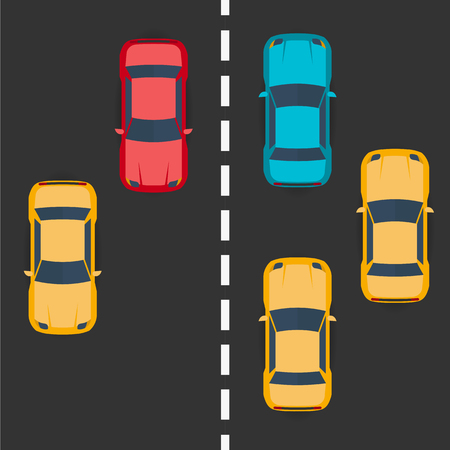Introduction to Manual and Automatic Driving in the UK
There’s a certain romance to British motoring—a heritage woven with tales of winding B-roads, foggy mornings, and the reassuring click of a well-worn gearstick. For generations, learning to drive in the UK has meant grappling with the venerable manual gearbox: that delicate dance of clutch, accelerator, and gear lever that’s as much a rite of passage as it is a practical skill. Yet, as British roads evolve and technology marches on, automatics are increasingly joining the mix, offering a different kind of simplicity for modern learners.
Whether you find yourself drawn to the mechanical intimacy of a classic Mini or tempted by the effortless glide of a contemporary automatic, understanding both gearbox styles remains essential for UK learners. The choice isn’t merely about convenience—it’s about embracing Britain’s unique driving culture, where roundabouts abound, country lanes twist unexpectedly, and every journey offers echoes of motoring history.
From the bustling streets of London to the scenic stretches of the Lake District, your experience behind the wheel will be shaped not only by your choice of car but also by time-honoured traditions and local driving etiquette. In this guide, we’ll take you through what makes each transmission style distinct—rooted in decades of British automotive craftsmanship—while helping you navigate today’s roads with confidence and style.
Key Differences: Manual vs Automatic
When learning to drive in the UK, one of the first decisions you’ll face is whether to get behind the wheel of a manual or automatic car. Both options have distinct characteristics, shaped by decades of British motoring tradition and the evolving demands of modern life. Understanding how each transmission type behaves on our unique roads is essential for learners aiming to make an informed choice.
A Hands-On Comparison
Manual cars are deeply rooted in British driving culture. They offer drivers a direct connection with the vehicle—every gear change is a tactile experience, especially when navigating classic winding B-roads or negotiating city traffic. In contrast, automatics are gaining popularity thanks to their simplicity and ease of use, particularly in stop-start urban environments like London or Manchester.
Transmission Quirks on British Roads
| Feature | Manual | Automatic |
|---|---|---|
| Control | Full command over gears and clutch; suited for hilly or twisty rural routes | Smoother ride in heavy traffic; less driver input required |
| Learning Curve | Steeper; requires coordination and timing—especially at roundabouts and junctions | Gentler; focus is more on road awareness than gear changes |
| Licence Implication | Permits driving both manual and automatic vehicles after passing test | Restricts driver to automatics unless another test is taken in a manual car |
Tradition vs Convenience
The UK’s love affair with the manual gearbox persists among enthusiasts and those who appreciate the sense of control it offers. Yet, as congestion rises and electric vehicles (which are typically automatic) become more common, convenience is swaying many learners toward automatics. Your preference may come down to how much you value hands-on involvement versus effortless commuting.

3. Mastering the Manual: Essential Tips for Stick-Shift Driving
If you’re learning to drive a manual car in the UK, you’re joining generations of motorists who’ve honed their craft on everything from sturdy Morris Minors to today’s nimble hatchbacks. British roads—with their winding lanes, steep gradients, and ever-present roundabouts—offer the perfect training ground for mastering clutch control and gear changes. Here’s some classic guidance for getting that authentic ‘feel’, whether you’re behind the wheel of a cherished classic or a modern manual.
Understanding Clutch Control
The heart of driving a stick-shift is smooth clutch operation. In Britain, this skill is particularly vital when tackling hill starts or inching forward in city traffic jams. The key is finding the biting point—the moment your car wants to move as you gently lift the clutch pedal. Practise in a quiet street or car park until finding this balance becomes second nature.
Classic vs Modern Manuals: What to Expect
| Feature | Classic British Manual | Modern British Manual |
|---|---|---|
| Clutch Feel | Heavier, requires more finesse | Lighter, more forgiving |
| Gear Lever Action | Longer throw, mechanical feedback | Smoother, shorter shift pattern |
| Biting Point Location | Tends to be higher up | Usually lower and more consistent |
| Hill Start Assistance | None—heel-and-toe technique often needed | Some models feature electronic aids (hill hold) |
Top Tips for Gear Changes on British Roads
- Anticipate: Look well ahead—gear selection should match upcoming bends, junctions, or inclines.
- No ‘grinding’: Always fully depress the clutch before shifting; never force the lever if it resists.
- Smoothness counts: Release the clutch gently and coordinate with the accelerator for seamless progress—especially crucial in wet or icy British weather.
- Downshifting: Practise rev-matching (blipping the throttle) for vintage cars—this preserves gearbox longevity and feels satisfyingly old-school.
- Don’t ride the clutch: Keep your left foot off the pedal unless changing gear; unnecessary pressure leads to premature wear.
Nostalgic Note: Why Learn Manual?
The joy of rowing through the gears on a twisty B-road is a rite of passage for many UK drivers. Whether you dream of piloting an MGB down country lanes or simply want full control over your daily commute, mastering manual skills connects you with Britain’s rich motoring heritage—and ensures you’re ready for any car, old or new.
4. Automatic Driving: Simple Yet Subtle Techniques
While automatic cars are increasingly popular on UK roads, many learners mistakenly believe they require little more than just steering and braking. However, the art of driving an automatic—especially across Britain’s winding lanes and bustling high streets—demands its own set of refined skills. Here’s how to get the most out of your auto while keeping things smooth, safe, and efficient.
Mastering the Basics
Automatic gearboxes handle shifting for you, but that doesn’t mean you can be complacent. Always begin by familiarising yourself with the gear selector positions—P (Park), R (Reverse), N (Neutral), and D (Drive). Unlike manuals, you won’t need to coordinate a clutch, but understanding when to use each mode ensures safety at every stage, from starting off to parking up outside your local chippy.
Sensitivity on British Roads
Our roads are famously narrow and twisty, so it pays to adopt a gentle touch. Smooth acceleration and progressive braking are essential; sudden movements can unsettle your car, especially on damp or leaf-strewn surfaces. When cornering through a country lane in the Cotswolds or navigating urban roundabouts, keep both hands on the wheel and anticipate hazards early. Automatics respond best when you plan ahead rather than react last minute.
Tips for Efficient & Comfortable Automatic Driving
| Situation | Tip |
|---|---|
| Hill Starts | Use the brake hold feature if available; otherwise, gently apply throttle as you release the footbrake. |
| Stop-Start Traffic | Keep your foot on the brake when stationary—don’t shift into ‘N’ unless stopped for an extended period. |
| Bends & Corners | Ease off the accelerator before turning; let the gearbox downshift naturally if needed. |
| Parking Manoeuvres | Creep slowly using light throttle and be ready to use ‘R’ or ‘D’ as required. |
Embracing Modern Features
Many new automatics come equipped with driving aids such as adaptive cruise control and lane assist—embrace these technologies where appropriate, but never rely solely on them. Remember, local etiquette matters: flash your lights or give a nod to thank courteous drivers, especially in rural areas where camaraderie still counts.
The Takeaway
An automatic might take care of the gears for you, but it still demands attention and finesse. With mindful practice and respect for British driving culture, you’ll find that piloting an auto can be every bit as rewarding as rowing through the gears in a classic manual.
5. Common UK Road Scenarios: Roundabouts, Hills, and the Local Weather
Driving in Britain presents a unique set of challenges, whether you’re mastering a classic manual gearbox or gliding along with automatic ease. The local roads are steeped in character—quite literally, when it comes to our famed hills and winding lanes! Here’s how to navigate some quintessentially British driving situations as a learner:
Roundabouts: The Heartbeat of British Roads
No matter your choice of transmission, roundabouts require sharp observation and decisive action. Manual drivers will need to perfect clutch control for smooth entry and exit—remember, dropping into second gear is often your best friend here. Automatic drivers benefit from seamless acceleration but must still judge gaps confidently and indicate clearly.
| Scenario | Manual Advice | Automatic Advice |
|---|---|---|
| Approaching the roundabout | Downshift early, cover the clutch and brake for maximum control | Ease off the accelerator, use gentle braking to maintain smoothness |
| Navigating busy traffic | Feather the clutch to avoid stalling in stop-start flow | Rely on creep function for easy progress at low speed |
| Exiting safely | Prepare to shift up as you leave, keeping revs steady | Let the gearbox handle shifting, focus on steering and indicators |
Tackling Hills: From Steep Climbs to Tricky Descents
The British landscape is renowned for its rolling hills—and so are its city streets, especially in places like Sheffield or Bath. In manuals, hill starts can be daunting; get comfortable with the handbrake technique to prevent rollback. Automatics make this simpler thanks to hill-hold features, but always be aware of increased brake usage on long descents.
Hill Start Quick Tips:
- Manual: Set the handbrake firmly, find the biting point before releasing.
- Automatic: Use the brake hold or ‘creep’ function—never rush the transition between pedals.
The Local Weather: Rain, Fog & Slippery Surfaces
Britain’s weather is famously unpredictable; drizzle one minute, thick fog the next. On damp country lanes lined with mossy stone walls or leaf-strewn tarmac, both manual and automatic drivers must respect reduced grip levels. Manuals allow precise gear selection for engine braking on wet descents; automatics deliver smoother power transitions but demand gentle throttle use to avoid wheelspin.
| Weather Hazard | Manual Strategy | Automatic Strategy |
|---|---|---|
| Damp Lanes & Puddles | Select lower gears for more control; avoid sudden braking or acceleration | Use gentle pedal inputs; let traction control assist when needed |
| Misty/Foggy Conditions | Keep lights on low beam; use higher gears for smoothness if visibility drops suddenly | Rely on auto-lights if fitted; maintain steady speed, increase following distance |
| Icy Mornings (rare but possible!) | Pump brakes gently; start in second gear if very slippery to reduce wheelspin | Select ‘snow’ mode if available; accelerate and brake gradually at all times |
Nostalgic Note:
If you ever find yourself traversing a misty moor behind the wheel of a classic Mini or an old Rover automatic, remember: patience and mechanical sympathy go a long way—on these roads, it’s as much about enjoying the journey as reaching your destination safely.
6. Cost, Licences, and Future Considerations
When weighing up manual versus automatic cars as a UK learner, it’s crucial to understand how your decision affects licensing, ongoing costs, and long-term motoring habits. Here’s what every aspiring driver should keep in mind:
Licence Types and Restrictions
In the UK, passing your test in a manual car grants you a full Category B licence—meaning you can drive both manual and automatic vehicles. However, if you pass in an automatic, your licence is restricted to automatics only. Upgrading later means retaking your test in a manual car.
Licence Comparison Table
| Test Type | Licence Granted | What You Can Drive |
|---|---|---|
| Manual Test | Full Cat B | Manual & Automatic Cars |
| Automatic Test | Auto-Only Cat B | Automatic Cars Only |
Running Costs: Fuel, Maintenance, and Insurance
Manual cars generally offer better fuel economy and lower purchase prices compared to automatics—a tempting prospect for those watching their wallets. Maintenance on older manuals is often simpler and less expensive; think of clutch replacements over the more complex automatic gearboxes. However, newer automatics are closing the gap on efficiency and reliability. Insurance premiums also tend to be slightly higher for automatics due to repair costs.
Cost Comparison Table (Typical Averages)
| Manual Car | Automatic Car | |
|---|---|---|
| Fuel Economy (mpg) | Higher (e.g., 50 mpg) | Slightly Lower (e.g., 45 mpg) |
| Maintenance Cost (annual avg.) | Lower (£200–£400) | Higher (£350–£600) |
| Insurance Premiums | Slightly Lower | Slightly Higher |
The Long-Term Picture: Flexibility and Resale Value
If you fancy classic cars or plan to travel abroad where manuals are more common, mastering a stick-shift opens doors. Manual licences give you flexibility throughout your driving life—handy if you ever need to hire or borrow an older vehicle or fancy restoring a British classic from the golden era of motoring. On the flip side, automatics are surging in popularity with electric vehicles (which are all auto), meaning future-proofing may favour learning on an automatic if you’re set on modern tech.
Ultimately, whether you opt for a manual or automatic, consider not just today’s convenience but tomorrow’s opportunities—and remember that old-school skills never go out of style in Britain’s rich motoring heritage.
7. Final Thoughts: Choosing Your Path on British Roads
As you stand at the crossroads of your motoring journey, deciding between manual and automatic cars is more than a technical choice—it’s an embrace of tradition, practicality, and the enduring spirit of British driving. The roads across the UK, from winding Lake District lanes to the bustling streets of London, have long echoed with the distinct sounds of shifting gears and the gentle hum of automatics. Each path holds its own nostalgia and promise.
For many, learning to drive a manual isn’t simply about mastering clutch control or gear changes; it’s about connecting with generations before—those who took pride in the tactile feel of every drive, from classic Minis to beloved Cortinas. Manuals offer a certain romance: a sense of belonging to a lineage of British motorists who valued skill and engagement.
Yet, there’s no denying the practicality offered by automatics, especially in today’s urban landscapes. For learners navigating modern traffic or those seeking ease and comfort, automatics deliver seamless journeys without sacrificing safety or confidence. As technology advances, more Britons are choosing automatics for daily life, reflecting shifts in both car culture and necessity.
Whichever route you choose—guided by nostalgia or practicality—the table below highlights how each transmission fits into different aspects of the British driving experience:
| Aspect | Manual | Automatic |
|---|---|---|
| Nostalgia & Heritage | Strong—links to classic British motoring | Growing—modern classics emerging |
| Urban Driving | Challenging in traffic | Smoother and easier |
| Fuel Efficiency | Traditionally better control | Improved with new technologies |
| Driving Test Flexibility | Allows driving both types post-test | Restricted to automatics only (unless re-tested) |
As you plot your course along Britain’s diverse roads, remember that your choice reflects both your personality and practical needs. Whether you opt for the hands-on charm of a manual or the effortless flow of an automatic, you’re joining a proud tradition—one shaped by innovation, resilience, and a timeless passion for driving. Whichever key you turn, let your journey be one filled with learning, discovery, and the unmistakable character of British motoring.

